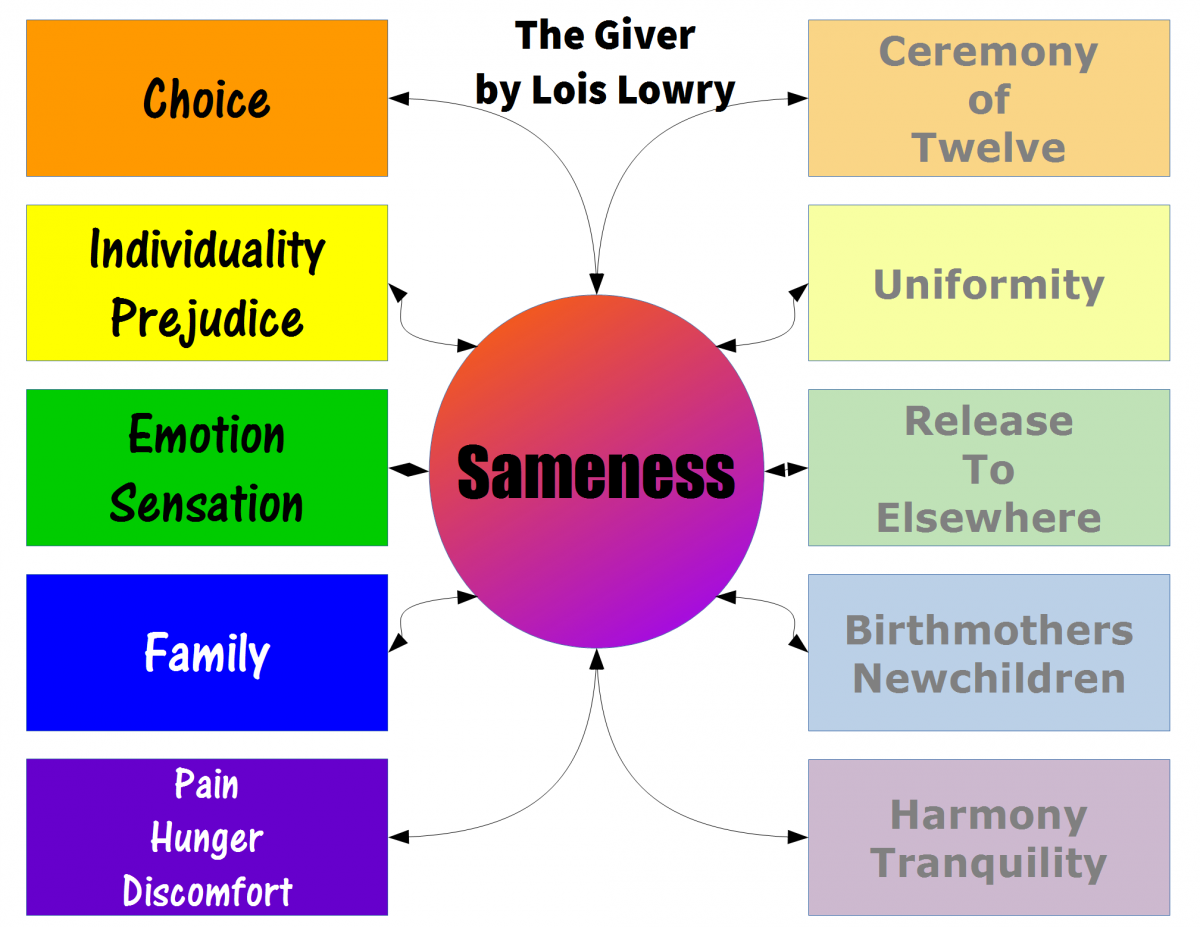The Giver, a book by Lois Lowry, describes an attempt to create a perfect world. Humanity has managed to erase the memories of all negative or unpleasant events and instead create a society without inequality through Sameness. I have placed the Sameness in the center of my multi-flow map as it is a single most important event, with one possible exception which I will explain below.
Before the Sameness, the world of the book was much like ours. It was riddled with all kinds of negative events, which I have expressed as war, pain, and hunger in the lowest box. The Sameness brought harmony and tranquility instead. Nobody feels pain anymore, nobody is envious of others, and all the resources are aplenty. The Ceremony of Twelve also made people happier by assigning them to the jobs they fit the best (Lowry 22).
However, I have placed “Choice” on the opposite side of the Ceremony. The choice is usually thought of as something everyone should have, so at this point, things start to seem more tricky. For example, the uniformity has eliminated prejudice, but it also stripped the people of individuality. The world which resulted from Sameness is serene, but it is also bland. This is the reason I’ve colored the right side in washed-out colors. Similarly, the efficient birth system where the “new children” are brought up in separation from their parents, and the dissolution of “family units” is regulated by the Council may be beneficial, but it also destroys the concept of family (Lowry 52). Finally, the central box lists the emotions and sensations, probably the cause most responsible for the occurrence of the Sameness.
There is little doubt that emotions are often, if not always, responsible for the foul deeds, but depriving the humanity of them is a questionable practice. Besides, we can see that on the opposite side resides the “release to Elsewhere,” a practice of removing unfit new children, old citizens who lose their value to society, and deviant individuals (Lowry 128). In fact, this is a death sentence, only a few members of society know the truth. While we can not say that the release is a direct result of the disappearance of emotions, it is hard to imagine a compassionate human being who does not care about the little children who are deemed unfit.
Obviously, such a tranquil yet inhumane and emotionless world is not a better alternative to its previous version. For this reason, Jonas, the protagonist, feels more outraged each time he receives new memories from the Giver (Lowry 152). It can also be seen that the Giver himself shares the dismay and supports Jonas wherever he can.
This is where the effects become the causes for a new event. In this case, the established order and even the harmony appears irrelevant and even repelling, and Jonas decides to reverse the Sameness. This is why the arrows on the map point in both directions: by leaving the community with Gabriel, a new child who was scheduled to be released, he travels to the Elsewhere in the hope that this journey will disperse his memories and the community will once again attain individual features and will be able to feel again.

Work Cited
Lowry, Lois. The Giver, Boston, Massachusetts: Houghton Mifflin Harcourt, 2014. Print.